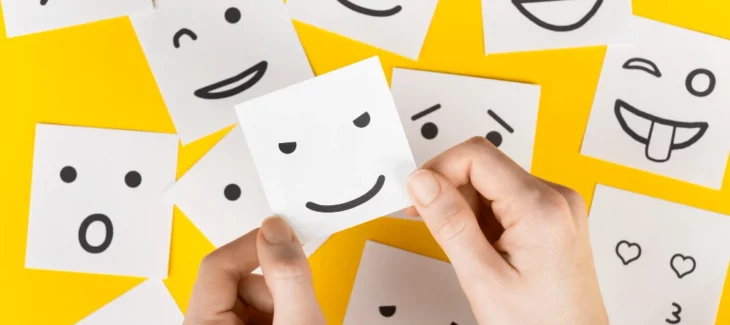The MBTI test is a psychological indicator that allows you to assess and grasp the complexity of the personality of the person who takes it. Very popular, this tool is also known as IPMB in French and “MBTI test” or “M.B.T.I test” in English.
In companies, the Myers-Briggs test is the key piece of a recruitment strategy put in place to know candidates during interviews. It is also used to accompany a professional retraining. The results then complete the information in the CV.
Far from being a judgment, the MBTI instrument makes it possible to measure the strengths, preferences and possibilities of evolution of an individual. Focus on the MBTI test, this personality indicator so appreciated by HR departments and coaching firms.
MBTI Test: Genesis and Description of the Personality Indicator
The MBTI test, as the name suggests, is a personality indicator designed by the Myers Briggs Foundation. This is actually the result of 3 studies done on temperaments, but for different reasons and at different times. It was published in 1962 by psychologist Isabel Briggs Myers.
It all began in 1897, when Katherine Briggs decided to keep a diary of each stage of her daughter’s development. In 1921, the Swiss psychiatrist Carl Gustav Jung published a book entitled “Psychological Types” in which he developed his theory of the 16 personalities.
Katherine’s studies and writings joining those of Carl, the young mother decides to take inspiration from them. In 1943, her daughter Isabel thought about a solution to end the conflicts of the Second World War. This is the beginning of several years of studies and analyses on several people.
After several essays on medical students, the first MBTI personality test was published by Isabel Briggs Myers and her mother Katherine Cook Briggs. It is the subject of several regular updates intended to adapt it to the various innovations in psychology.
To date, the Myers assessment is one of the most widely used tests in the world. It is indeed a very useful tool for HR as part of a psychotechnical test for a job interview. Even psychologists use it to detect personality disorders in patients.
The MBTI personality test operation and use
According to Jung, a person has four psychological functions that they use to varying degrees. Similarly, humans have natural preferences for processing information, making decisions, and interacting with others, depending on whether the person is an introvert or an extrovert.
To these last criteria, the work of Isabel Briggs makes it possible to add a function related to the organization. We then obtain the following 8 values symbolized by the initial or the 2nd letter of the word in English:
- Extraversion (E) or Introversion (I): Orientation of the person’s energy;
- Sensation (S) or Intuition (N): Collection of information;
- Thought (T) or Feeling (F): Decision making;
- Judgment (J) or Perception (P): Environmental management.
The principle of operation of the MBTI personality test
The MBTI test works as a model of understanding based on 4 main dimensions of personality. Depending on the version, it is a 15 to 20-minute questionnaire with 93 to 222 statements. To answer, the person tested has the choice between two preferences.
Very fast, the final result is in the form of 4 letters and makes it possible to determine the typical character traits of the candidate. It is for this speed that the MBTI test is used in recruitment marketing to facilitate the onboarding process.
The use of the personality indicator called the MBTI test
To test the effectiveness of their management, the manager can offer the MBTI test to their teams. The results can be used to:
- Strengthen team cohesion;
- Set up differentiated coaching;
- Assess training needs;
- Improve conflict management.
Presentation of the 16 personalities of the MBTI test
The MBTI test highlights 16 personality types classified into 4 categories grouping 4 distinct profiles. To determine yours, a validation interview with a trainer certified by The Myers-Briggs Company is helpful. Here are the different personalities.
- Analysts include INTJ, INTP, ENTJ, and ENTP profiles. With a preference for seriousness, responsibility, and organization, the people concerned have an aptitude for creative work. They are also rational and comfortable with complex problems;
- The MBTI test also makes it possible to categorize the personality of diplomats (INFJ, INFP, ENFJ, ENFP). These are empathetic people for whom having meaningful relationships is important. Guided by their intuition and feelings, these idealistic individuals do not hesitate to help others;
- As their category indicates, explorers (ISTP, ISFP, ESTP, ESFP) have a pronounced taste for adventures and new experiences. Sensitive and perceptive, these people are also very open-minded;
- Finally, there are the sentinels (ISTJ, ISFJ, ESTJ, ESFJ). Just like analysts, these personalities are generally responsible, reliable, and organized. They are also great sentimentalists for whom order and stability are necessary. They are often assigned the profile of guardians.
Thanks to digital, it is possible to interview several candidates of the same personality, at the same time. These are the advantages of e-recruitment. To this end, the MBTI test allows the recruiter to speed up the process and identify the right personality for the vacancy.
Benefits and limitations of the MBTI 16 Personality Test
The MBTI test helps everyone understand and express their personality, both in their personal and professional life. It’s also a great tool for getting to know others and creating stronger, more productive, and more enjoyable relationships.
This self-assessment test also provides access to a list of professions adapted to each personality type. This facilitates the processes of professional retraining, changes in the profession as well as career choice.
Benefits for human resources and businesses
Beyond personality, MBTI test results are used to analyze and predict candidates’ professional behavior and optimize recruitment sourcing steps. Thus, for each member, human resources departments can identify:
- Strengths and weaknesses;
- The perception of life;
- The ability to work in a team;
- Personal skills;
- Leadership preferences;
- Communication skills.
Like the Big Five test, the MBTI instrument can be the basis for an innovative recruitment method. It will then be necessary to identify in advance the talents sought in order to effectively guide the interviews.
The limitations of Myers-Briggs test results
If it bears the nomination of a personality test, the MBTI does not have the characteristics. Indeed, it is a questionnaire for which there are neither right nor wrong answers. The participant will have no information about their values, mental health, or even their favorite color.
It should be remembered that the MBTI test is an interpretation of the functional characteristics of a personality. Depending on the apparent type attributed to the individual, it gives clues as well as reflections on its functioning. It’s a bit like a user manual to which everyone adapts or not.
Under no circumstances does the MBTI inventory define the type of person you are. Especially since each MBTI profile is bound to evolve. In this sense, it is advisable that HR departments keep the results of the tests to avoid potential marginalization of the employee.
Beyond his knowledge and know-how, evaluating the soft skills of a candidate can be very decisive during recruitment. In the batch of personality indicators, the MBTI test is used to identify the compatibility with the position and to determine the possibilities of evolution in the company.
In addition, to better understand its employees and know their opinions on its operation, the company can also use a trusted platform of employee reviews. On this kind of platform, employees can anonymously leave their impressions about the company and its management. Just like an MBTI test, an employee review platform can be useful to better understand your employees.





